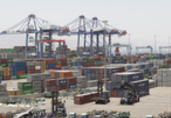An easing of Covid-19-related restrictions and shifting supply chains have bolstered growth in Asia, even as inflation and climate change generate significant headwinds.
Asia Economy
Economic update | Asia: Year in Review 2022
Macroeconomic forces such as inflation, geopolitical tension punctuated by Russia’s invasion of Ukraine and spikes in commodity prices heightened supply chain disruptions in 2022, which included capacity constraints, higher freight costs, labour shortages and port slowdowns.
Economic update | Can the informal economy bolster economic resilience in emerging markets?
Long viewed as a barrier to market development and fiscal sustainability, a dynamic informal economy is increasingly being recognised as an important source of resilience and a target for financial technology (fintech) services.
As emerging markets recover from the Covid-19 pandemic and face financial headwinds due to interest rate hikes in the US, the BRICS group – Brazil, Russia, India, China and South Africa – is looking to expand its membership to tackle shared challenges.
Despite the challenges of the Covid-19 pandemic, Malaysia’s increasingly diversified economy exceeded 3% growth in 2021 and is forecast to surpass 5% growth starting in 2022.
Economic update | G7 seeks to support emerging markets infrastructure as BRI investment wanes
Amid rising inflation and debt levels in emerging markets, G7 leaders pledged in June to raise $600bn in private and public funds over five years to finance infrastructure in developing countries and counterbalance the influence of China’s sweeping Belt and Road Initiative (BRI).



